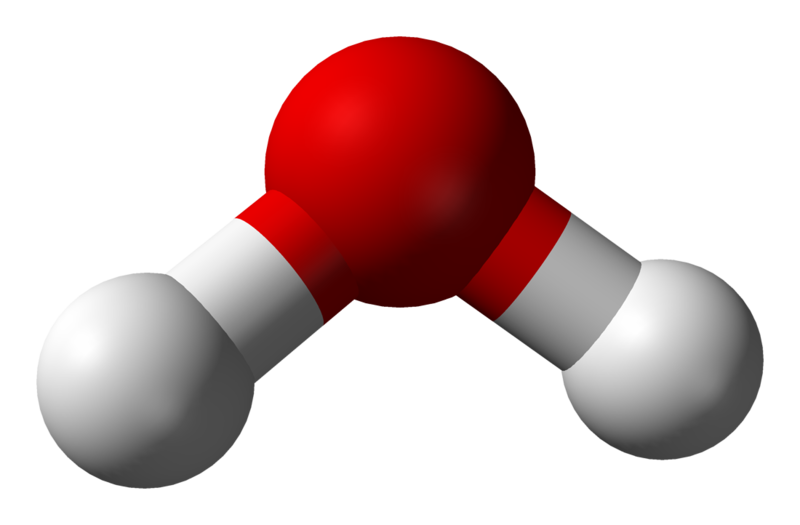This technique is crazy! It allows to both:You actually see discrete peaks at different minute counts on the other end.
- separate gaseous mixtures
- identify gaseous compounds
It is based on how much the gas interacts with the column.
Detection is usually done burning the sample to ionize it when it comes out, and then you measure the current produced.
Gas chromatography by Quick Biochemistry Basics (2019)
Source. Based on the fact that we don't have a P algorithm for integer factorization as of 2020. But nor proof that one does not exist!
The private key is made of two randomly generated prime numbers: and . How such large primes are found: how large primes are found for RSA.
The public key is made of:
n = p*q- a randomly chosen integer exponent between
1ande_max = lcm(p -1, q -1), wherelcmis the Least common multiple
Given a plaintext message This operation is called modular exponentiation can be calculated efficiently with the Extended Euclidean algorithm.
m, the encrypted ciphertext version is:c = m^e mod nThe inverse operation of finding the private
m from the public c, e and is however believed to be a hard problem without knowing the factors of n.Bibliography:
- www.comparitech.com/blog/information-security/rsa-encryption/ has a numeric example
Applications:
- because it has an even number of nucleons it is transparent to NMR, and therefore is useful in solvents for NMR spectroscopy
Cody'sLab had a nice 5 video series on making it at home! But the United States Government asked him to take it down as suggested at Video "What's Been Going On With Cody'sLab? by Cody'sLab (2019)" at youtu.be/x1mv0vwb08Y?t=84.
"Water" is the name for both:
- the chemical compound with chemical formula H2O
- the liquid phase of the chemical substance composed of the above chemical compound
Simplified phase diagram of water
. Source. Note the triple point and critical point visible. Phase diagrams are so cool!Phase diagram of water
. Source. Note all the obscure phases of ice. Pinned article: Introduction to the OurBigBook Project
Welcome to the OurBigBook Project! Our goal is to create the perfect publishing platform for STEM subjects, and get university-level students to write the best free STEM tutorials ever.
Everyone is welcome to create an account and play with the site: ourbigbook.com/go/register. We belive that students themselves can write amazing tutorials, but teachers are welcome too. You can write about anything you want, it doesn't have to be STEM or even educational. Silly test content is very welcome and you won't be penalized in any way. Just keep it legal!
Intro to OurBigBook
. Source. We have two killer features:
- topics: topics group articles by different users with the same title, e.g. here is the topic for the "Fundamental Theorem of Calculus" ourbigbook.com/go/topic/fundamental-theorem-of-calculusArticles of different users are sorted by upvote within each article page. This feature is a bit like:
- a Wikipedia where each user can have their own version of each article
- a Q&A website like Stack Overflow, where multiple people can give their views on a given topic, and the best ones are sorted by upvote. Except you don't need to wait for someone to ask first, and any topic goes, no matter how narrow or broad
This feature makes it possible for readers to find better explanations of any topic created by other writers. And it allows writers to create an explanation in a place that readers might actually find it.Figure 1. Screenshot of the "Derivative" topic page. View it live at: ourbigbook.com/go/topic/derivativeVideo 2. OurBigBook Web topics demo. Source. - local editing: you can store all your personal knowledge base content locally in a plaintext markup format that can be edited locally and published either:This way you can be sure that even if OurBigBook.com were to go down one day (which we have no plans to do as it is quite cheap to host!), your content will still be perfectly readable as a static site.
- to OurBigBook.com to get awesome multi-user features like topics and likes
- as HTML files to a static website, which you can host yourself for free on many external providers like GitHub Pages, and remain in full control
Figure 3. Visual Studio Code extension installation.Figure 4. Visual Studio Code extension tree navigation.Figure 5. Web editor. You can also edit articles on the Web editor without installing anything locally.Video 3. Edit locally and publish demo. Source. This shows editing OurBigBook Markup and publishing it using the Visual Studio Code extension.Video 4. OurBigBook Visual Studio Code extension editing and navigation demo. Source. - Infinitely deep tables of contents:
All our software is open source and hosted at: github.com/ourbigbook/ourbigbook
Further documentation can be found at: docs.ourbigbook.com
Feel free to reach our to us for any help or suggestions: docs.ourbigbook.com/#contact







